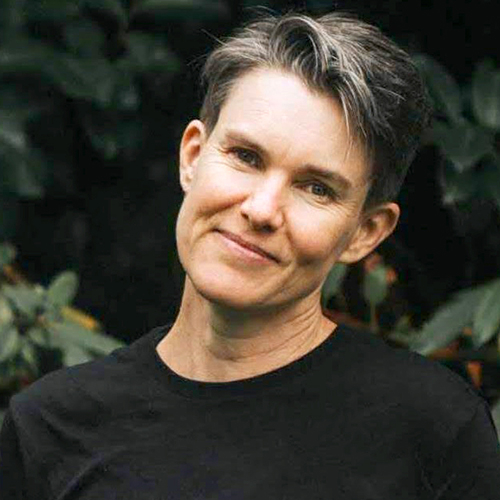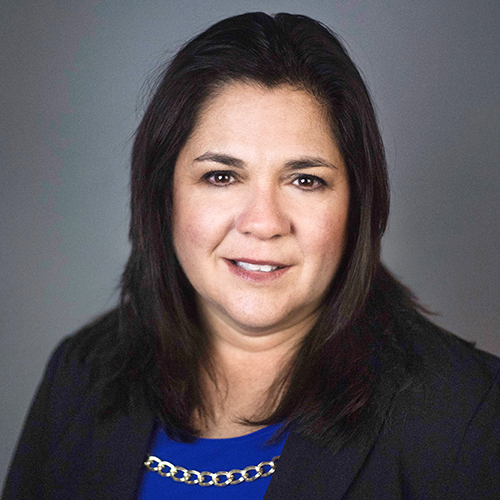
A Whole Body Approach to the Clinical Management of Complex Breastfeeding Issues Lecture Pack
Caring for babies with complex feeding issues requires a deep understanding of anatomy and physiology that goes beyond just the oral anatomy. This package provides a deeper look into the many factors that can impact breastfeeding/chestfeeding. Join our expert speakers to learn more about the neuroanatomy, reflexes and biomechanics of infant feeding, the cranial nerves, oral clefts, postural asymmetries and other structural issues, the role of manual therapy and how to create a comprehensive parent centered care plan for complicated cases.


Allyson is a physical therapist, International Board Certified Lactation Consultant and co-owner of Nurture Columbus, in Columbus, Ohio. She completed a Bachelor’s degree in Biology from Ohio University in 1997, and Master of Physical Therapy degree from Northwestern University in 1999. After having a child in 2007, she volunteered as a La Leche League leader. She discovered a love for supporting new parents but a gap in lactation care, which led her to become an IBCLC in 2014. Her clinical approach to identifying and overcoming feeding challenges is unique with physical therapy foundations in posture, movement and reflexive function. Through presentations she endeavors to engage IBCLCs to know more about movement as related to human lactation, and PTs to learn about breastfeeding/chestfeeding as related to human development. As past-president (2019-2021) of the Ohio Lactation Consultant Association, she also advocates for equitable access to and health plan coverage for lactation care.
Topic: Neuroanatomy and Biomechanics: Breastfeeding as a First Movement Milestone - [View Abstract]
1. Describe breastfeeding/chestfeeding as a movement milestone associated with better motor outcomes into adolescence
2.Define reflexive, active, and postural movements necessary for functional breastfeeding/chestfeeding
3.Explain neuromuscular dysfunction that can interfere with breastfeeding
4. List practical parent and caregiver activities that can improve the neuromuscular function and movement necessary for breastfeeding function
Knowledge of neuroanatomy, reflexes, and biomechanics as related to breastfeeding/chestfeeding is essential to IBCLC competency. This presentation will define breastfeeding/chestfeeding in terms of posture, movement, and reflexive function. Examples of neuromuscular dysfunction that impair breastfeeding will be provided. Strategies for treating neuromuscular dysfunction that impedes movement essential to breastfeeding/chestfeeding success will be reviewed along with new research on how participation in infant movement group classes facilitated maternal confidence in breastfeeding/chestfeeding. Presented by an IBCLC who is also a physical therapist, this presentation explores how breastfeeding/chestfeeding should be considered a first movement milestone fostered through interactive tummy time at the most basic and often effective level, and in need of more definition as such across the healthcare continuum. While alerting other healthcare professionals to this definition can help improve support for it, IBCLCs should be the clinical expert in its assessment and treatment as a foundation to collaboratively solving more complex movement impairments that challenge breastfeeding success.


Aiden Farrow is an IBCLC, writer, speaker, and infant feeding and health equity advocate. Parent of a child born with a cleft lip and palate, they have advocated extensively over the last 16 years in order to increase awareness of the specific challenges faced by cleft affected infants and their families and to increase adequate lactation support for this community. Based in Victoria BC, Aiden has a private practice entirely focused on babies with oral clefts, providing support internationally via telehealth. Aiden serves on the editorial review board of the Journal of Human Lactation and co-authored the journal’s policy on sex and gender inclusion. Aiden works with Indigenous families as a family support worker and lactation and infant feeding consultant at the Victoria Native Friendship Centre and has a special interest in food security and food sovereignty for infants and toddlers.
1.Apply a cleft care timeline to provide anticipatory guidance to parents
2.List 3 examples of short term, achievable breastfeeding/chestfeeding goals for babies with an oral cleft and the lactating parent
3.Describe 3 tools parents can use to support developmentally appropriate feeding skills for their baby with an oral cleft
When a baby is born with a cleft lip, cleft palate, or cleft lip and palate, how the infant will be fed is an immediate and compelling issue to resolve. Once the baby is feeding competently at the breast or with a bottle, the family may receive little to no feeding support between the early weeks after birth until the recovery period following lip or palate surgery. While full breastfeeding (directly at the breast, without compensations or devices) is theoretically possible once the lip and palate are repaired, some babies have difficulty returning to direct breastfeeding or chestfeeding, and babies who have never been breastfed or chestfed, lack the oral skills to do so. In this presentation, I will discuss what “scaffolding for success” means in the context of breastfeeding and chestfeeding with an oral cleft. I will cover how to counsel parents at each significant stage of the baby’s cleft care timeline, how to support a parent’s unique feeding goals, how to break down a feeding goal into smaller, achievable steps, techniques for supporting at the breast feeding for babies with unrepaired clefts, best practices for achieving a full milk production, mixed feeding, feeding tools, and how to support developmentally appropriate feeding skills before and after cleft repair surgery.


Kirsten Hannan is an Australian trained and registered Osteopath with 17 years of clinical practice experience, with a particular interest in pregnancy and postpartum care and working with babies and children of all ages. She has experience in treating babies for a variety of issues, including latching and feeding difficulties, birth trauma, neck tension, flat head syndrome and digestive issues. Kirsten uses a variety of osteopathic treatment methods, including cranial osteopathy. Her passion for education and helping children to develop in the best possible way led her to further her knowledge of breastfeeding and she qualified as an International Board Certified Lactation Consultant (IBCLC) in July 2017. She enjoys integrating the very best of bodywork and evidence-based lactation care and support to help mums and their babies. Kirsten is an author and reviewer for the International Journal of Osteopathic Medicine, a member of Osteopathy Australia and registered with the Australian Health Practitioner Regulation Agency (AHPRA) and International Board of Lactation Consultant Examiners (IBLCE).
1.Describe clinically relevant anatomy when assessing infant suck and suck dysfunction
2.Explain infant postural asymmetries and how they can contribute to sucking difficulties
3.Define the role of manual therapy treatment in mastitis conditions
The extensive benefits of breastfeeding have been well established. However, while the majority of birthing women initiate breastfeeding, discontinuation is common when problems arise. In this presentation, we will review the pertinent anatomy of the breast and breastfeeding infant, learn to identify asymmetrical characteristics in infant posture, discuss how postural asymmetry impacts infant suck, and describe multiple modalities and techniques for the management of common mother and baby presentations.

 Aruna Savur,
MBBS, DNB (Pediatrics), Advanced training in Neonatal Intensive Care, IBCLC, Certified Infant Massage Instructor
Aruna Savur,
MBBS, DNB (Pediatrics), Advanced training in Neonatal Intensive Care, IBCLC, Certified Infant Massage Instructor

Dr Aruna Savur lives and works in Bengaluru, India as a pediatrician, IBCLC and certified infant massage instructor in private practice. She graduated MBBS from Mysore Medical College and Research Institute in 1990. She certified the Diplomate National Board exam in Pediatrics in 1997 from Father Muller's Medical College, Mangalore. She subsequently worked in private pediatric practice. In 2015 she trained in Neonatal Intensive Care from Manipal Hospital, Bengaluru. In 2018 she qualified as an IBCLC. In 2020 she certified from IAIM ( International Association of Infant Massage) as a infant massage instructor. She worked in various hospitals in Bengaluru as a pediatrician and IBCLC. She has been working on educating herself by delving deeper into various lactation education certifications. She is currently training in craniosacral therapy for babies.
1.Describe clues that the baby’s journey in-utero and during birth has affected them structurally
2.List the clues in a baby’s physical and oral function at rest and in breastfeeding which can point to structural issues
3.Explain the IBCLC’s role in the team approach to management and how the IBCLC can contribute to restoration of normal function for the breastfeeding baby
 Aruna Savur,
MBBS, DNB (Pediatrics), Advanced training in Neonatal Intensive Care, IBCLC, Certified Infant Massage Instructor
Aruna Savur,
MBBS, DNB (Pediatrics), Advanced training in Neonatal Intensive Care, IBCLC, Certified Infant Massage Instructor
Breastfeeding is orchestrated by the newborn’s brain, eliciting the parent’s responses via their nervous system and hormones. The newborn uses 6 cranial nerves, 22 bones, 34 articulations, and 60+ muscles - all tied together by fascia, and multiple physiological processes to accomplish a smooth suck, swallow and breathe cycle. Any abnormal function of the nervous, muscular or skeletal system can disrupt the biomechanics of breastfeeding, which the baby would circumvent with compensations. If this is detected, corrected and supported the innate breastfeeding bond can be reestablished. Detection includes looking for clues in the history (pregnancy, birth, breastfeeding), in the physical examination of the baby, oral exam, and the breastfeeding process. This presentation helps the learner to identify the structures involved, what could have caused dysfunction, the kind of dysfunction that ensues, and the breastfeeding compensations being used by the baby. These can then be effectively addressed by the IBCLC along with a collaborative care team to ensure a competent breastfeeding journey.


Dr. Hazelbaker has been a therapist in private practice for over 30 years. She specializes in cross-disciplinary treatment and to that end has taken training in several modalities to best assist her clients. She is a certified Craniosacral Therapist, a Lymph Drainage Therapy practitioner, a Tummy Time™ Trainer, a Haller Method practitioner, A Pre and Perinatal Psychology Educator, a Lactation Therapist Diplomate, an International Board Certified Lactation Consultant and a fellow of the International Lactation Consultant Association.
She earned her Master’s Degree from Pacific Oaks College (Human Development specializing in Human Lactation) and her doctorate from The Union Institute and University (Psychology, specializing in Energetic and Transformational healing.)
People recognize her as an expert on infant sucking issues caused by various structural problems like torticollis, plagiocephaly, brachycephaly and tissue shock-trauma. She invented the Hazelbaker™ FingerFeeder and the Infant Breastfeeding CranioSacral Protocol™ to assist in the resolution of this type of infant sucking dysfunction.
Topic: Cranial Nerves: A Critical Component of the Process of Breastfeeding - [View Abstract]
Topic: Creating Flow: Using Lymphatic Drainage Therapy for Breastfeeding Issues - [View Abstract]
Topic: Finger Feeding: What Do We Know? What Should We Know? - [View Abstract]
Topic: Gamechangers: New studies that will change the way we think about tongue-tie - [View Abstract]
Topic: Infant Trauma: Impact on Breastfeeding - [View Abstract]
Topic: The Faux Tie: When is a "Tongue-tie" NOT a Tongue-tie? - [View Abstract]
Topic: The Impact of Bodywork on Infant Breastfeeding - [View Abstract]
Topic: What Does Torticollis Have to do with Breastfeeding? - [View Abstract]
1.List the cranial nerves that are primarily responsible for coordinating suck-swallow-breathe
2.Describe the main nuclei of these cranial nerves
3.Explain the innervation of the oral and oro-pharyngeal areas
4.Describe the essential role of the trigeminal nerve in breastfeeding
This presentation covers the role of the cranial nerves in coordinating suck-swallow-breathe, a critical component of the process of breastfeeding. In this presentation, Dr. Hazelbaker identifies the main nuclei of these cranial nerves, how the oral and oro-pharyngeal areas are innervated, and presents the pathways and functions of each relevant cranial nerve with special emphasis on the trigeminal and vagal nerves and their nuclei, describing how each impacts the actions needed for effective breastfeeding.


Annette Leary is a registered nurse with over 33 years of experience working in Maternal Child Health (pediatrics, postpartum, home health care and level 2 NICU). She became an IBCLC in 1995. She owns a private practice providing office, in home, and virtual visits at Orlando Lactation and Wellness. In 2022 she formed a collaborative company Baby B.L.I.S.S. : Central Florida Feeding Collaborative where she and her business partners help families prenatally, antepartum and post partum navigate the growth, development and feeding journey of their children. She began her craniosacral therapy training through the Upledger Institute in 2015, taking advanced maternal and pediatric specialty classes. Annette has found great improvement incorporating craniosacral therapy techniques with lactation consulting. Helping Families Latch onto Parenting has always been her mantra.
Topic: Where to Start: Creating a Lactation Care Plan for Complex Breastfeeding Cases - [View Abstract]
1.List 3 key components to designing a care plan
2.Describe 3 examples of goals for a lactation care plan
3.Describe 3 signs of a successful action plan
Designing a sustainable proposal of lactation care involves many components. The parents are the main leaders in constructing this plan. Family dynamics that include the physical, emotional and mental health of both parent and child make up the key layout. Setting client-centered goals, developing strategies, outlining tasks and setting up routines are important to accomplishing their personal goals. Families often seek a holistic integrative approach that includes personal goals, support networking, comfort, and collaborative resources that make up their action plan of care. This program will review several complex case studies and how the families designed their plan of care with the guidance and understanding of a team approach.
Accreditation
CERPs - Continuing Education Recognition Points
Applicable to IBCLC Lactation Consultants, Certified Lactation Consultants (CLCs), CBEs, CLE, Doulas & Birth Educators. GOLD Conferences has been designated as a Long Term Provider of CERPs by the IBLCE--Approval #CLT114-07. This program is approved for 6 L-CERPs.
CERPs are valid until 04/03/2026.
Dietetic CPEUs - Continuing Professional Education Units
Applicable to Dieticians & Nutritionists, this program is approved for 6 Dietetic CPEUs by the Commission on Dietetic Registration - the credentialing agency for the Academy of Nutrition and Dietetics.
Dietetic credits are valid until 04/03/2026.
Midwifery CEUs - MEAC Contact Hours
This program is accredited through the Midwifery Education & Accreditation Council (MEAC) and is approved for 6 Hours, the equivalent of 0.6 CEUs. Please note that 0.1 MEAC Midwifery CEU is equivalent to 1.0 NARM CEUs.
MEAC credits are valid until 04/03/2025.
Nurse Contact Hours
This nursing continuing professional development activity was approved by the American Nurses Association Massachusetts, an accredited approver by the American Nurses Credentialing Center’s Commission on Accreditation for 6 Nursing Contact Hours.
Nurse Contact Hours are valid until 01/17/2025.
- View this presentation in its entirety, under your individual GOLD login info
- Successfully complete a post-test (3 out of 3 questions correctly answered)
- Fill out the Evaluation Survey
If you have already participated in this program, you are not eligible to receive additional credits for viewing it again. Please send us an email to [email protected] if you have any questions.
Additional Details
Viewing Time: 4 Weeks
Tags / Categories
(IBCLC) Clinical Skills, (IBCLC) Development and Nutrition, (IBCLC) Pathology, Breastfeeding Complications, IBCLC in Collaboration With Other Health Professionals, Infant Anatomy & Physiology, Infant Development & Growth
How much time do I have to view the presentations?
- The viewing time will be specified for each product. When you purchase multiple items in your cart, the viewing time becomes CUMULATIVE. Ex. Lecture 1= 2 weeks and Lecture Pack 2 = 4 Weeks, you will have a total of 6 weeks viewing time for ALL the presentations made in that purchase.
- Time for viewing the talks begins once you purchase the product. For Live Webinars & Symposiums, the viewing period begins from when the live event takes place. Presentations can be accessed 24/7 and can be viewed as many times as you like during the viewing period.
What are bundled lectures?
- Presentations may be available individually or via a bundled package. Bundled lectures are a set of lectures that have been put together based on a specific category or topic. Some lectures will be available in both individual and lecture form, whereas others will be available only via a bundled lecture pack.
Will there be Handouts?
- YES! Each lecture comes with a PDF handout provided by the Speaker.
Some lectures include a Q&A, what does that mean?
- During our online conferences, presentations that occur live are also followed by a short 15 minute Question & Answer Session. The Speaker addresses questions that were posted by Delegates during the presentation. We include the recording of these Q&A Sessions as a bonus for you.
How can I receive a Certificate?
- If this presentation offers a certificate, once you are done viewing the lecture or the lectures within a bundle, submit your attendance record in order to be able to download your certificate. You'll be able to see which credits are offered for the lecture by hovering over the "Credits Available" link within the "Speakers & Topics" tab.
Professionals that selected this package also viewed

|
|

|









